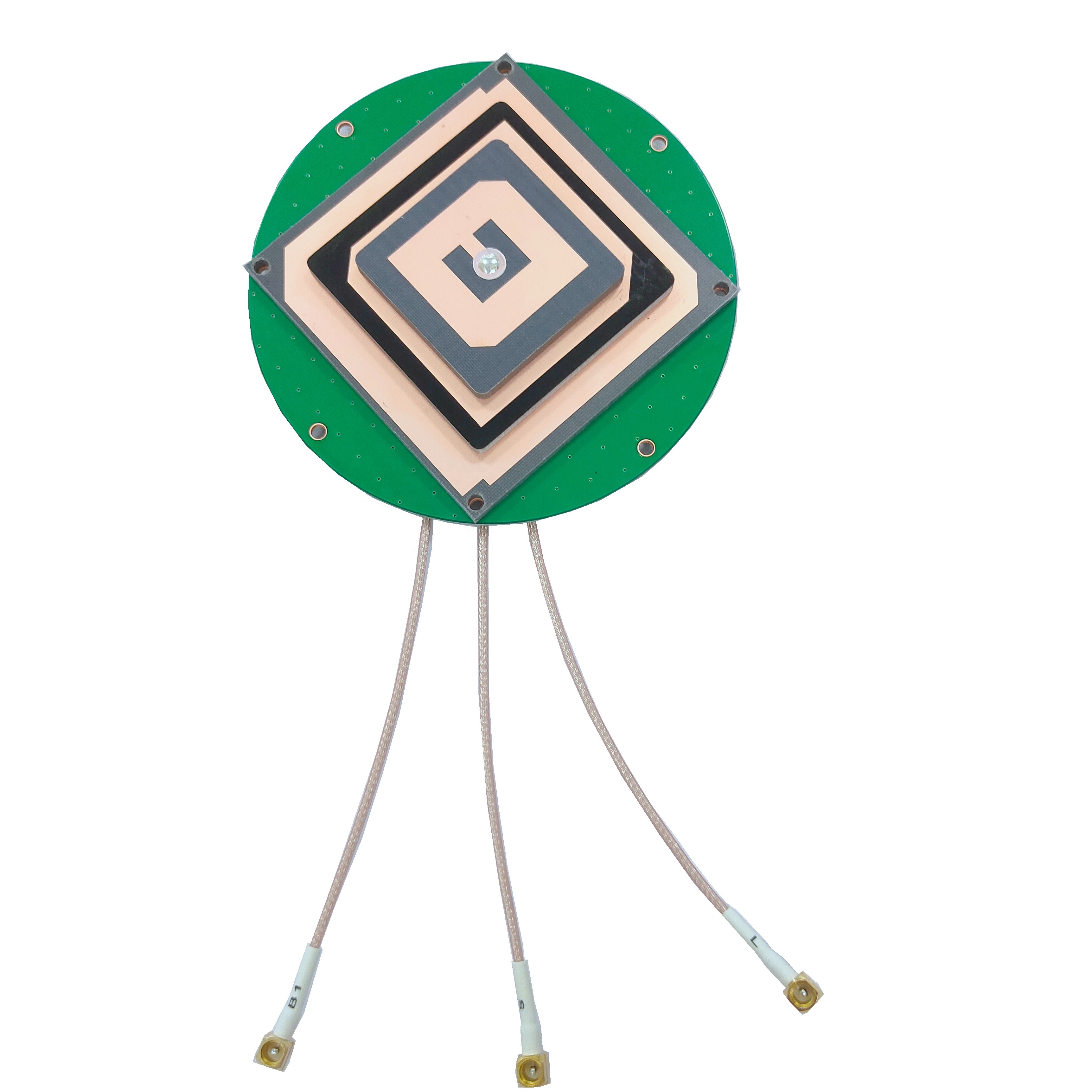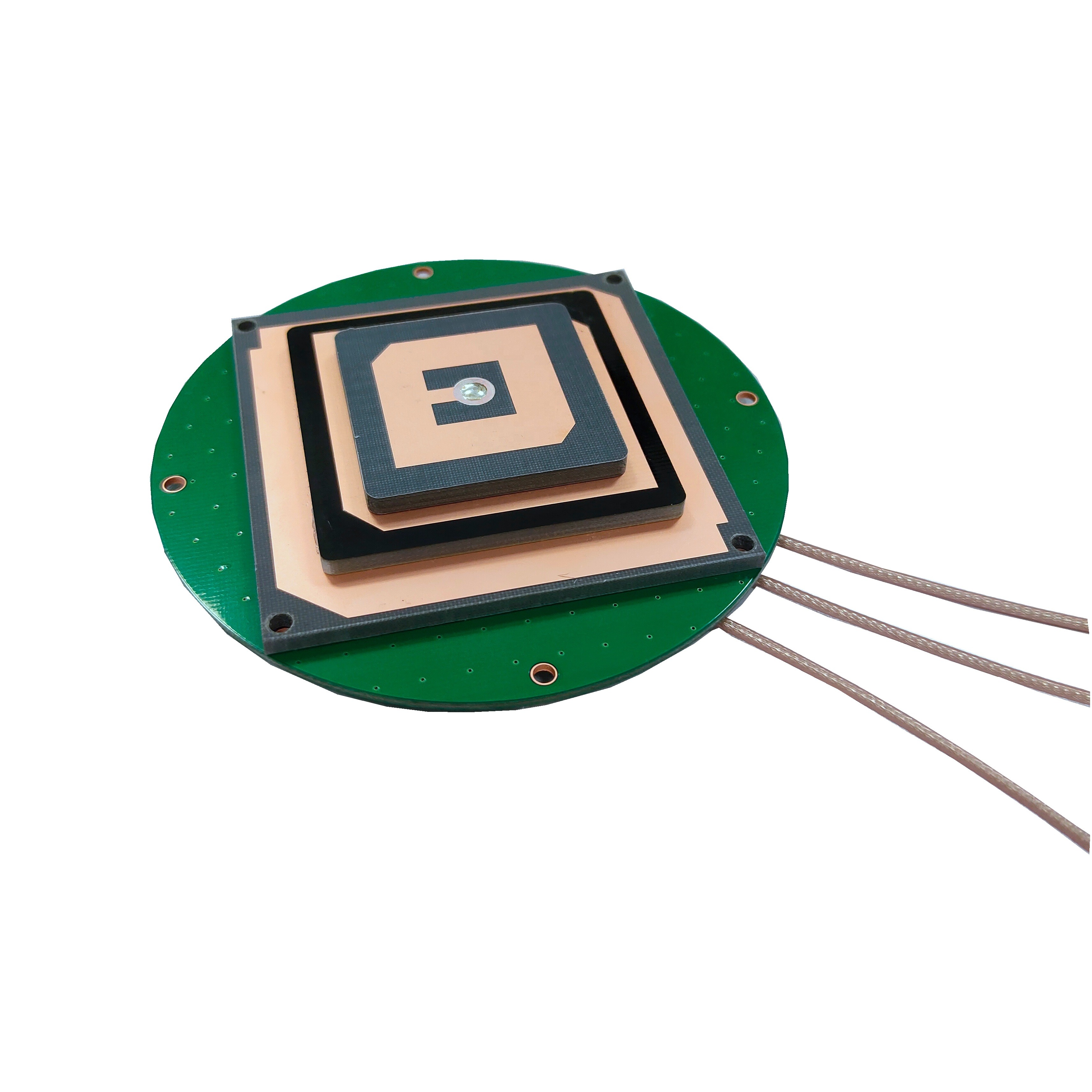The applications for portable precision surveying GNSS antennas have expanded far beyond traditional land surveying, driven by the relentless demand for higher accuracy across numerous industries. Concurrently, technological trends are shaping the next generation of these critical devices.
Applications:
Classical Surveying and Construction: This remains the core application. It is used for establishing control networks, topographic mapping, boundary surveys, and construction layout. The antenna is mounted on a fixed-height tripod or pole for static surveying or on a rover pole for RTK topographic work.
Machine Guidance and Control (Earthworks, Agriculture): High-precision antennas are mounted on bulldozers, graders, excavators, and combine harvesters. They provide real-time, centimeter-accurate position and elevation to the machine's control system, enabling automated grade control, precision digging, and driverless operation. This increases efficiency, reduces material waste, and lowers fuel consumption.
Unmanned Aerial Vehicles (UAVs / Drones): This is a rapidly growing application. Lightweight, low-profile precision antennas are integrated into drones for photogrammetry and LiDAR mapping. Using PPK (Post-Processed Kinematic) or RTK, the exact position and orientation of the drone's camera or sensor is recorded for each image, enabling the creation of highly accurate orthomosaics and 3D models without the need for numerous ground control points.
Precision Agriculture: Beyond guidance, GNSS antennas are used for variable rate technology (VRT), applying seed, fertilizer, and pesticides at precise rates based on location-specific data. This optimizes yields and reduces environmental impact.
Scientific and Monitoring Applications: Researchers use these antennas for crustal deformation studies (tectonic plate movement), volcanic monitoring, and glaciology. They are deployed in networks to measure millimeter-level movements over time. Structural monitoring of dams, bridges, and skyscrapers also uses permanently installed precision antennas to detect tiny deflections or settlements.
Autonomous Vehicles and Robotics: The development of self-driving cars, delivery robots, and maritime surface vessels relies on GNSS for absolute positioning. While often fused with IMUs, LiDAR, and cameras, a precision GNSS antenna provides the fundamental geospatial context and is critical for safety and path planning.
Asset Tracking and Geofencing: For high-value assets where knowing the exact location within a defined space is critical (e.g., ports, logistics yards, mining operations), precision antennas enable centimeter-level tracking and geofencing.
Future Trends:
Miniaturization and Integration: The push for smaller, lighter, and lower-power antennas will continue, primarily driven by the drone and autonomous vehicle markets. This involves developing new materials and designs that maintain high performance in a smaller form factor, such as miniaturized choke rings and advanced dielectric substrates.
Enhanced Multipath Mitigation: Research into "smart" or adaptive antennas that can electronically nullify interfering signals (like advanced multipath or jamming) in real-time is ongoing. This could involve phased array systems that can digitally steer their radiation pattern.
Tightly Coupled Antenna-Receiver Systems: We will see deeper integration between the antenna and receiver, with shared processing and smarter cross-talk. The receiver could actively adjust processing parameters based on real-time diagnostics from the antenna's front-end.
Focus on Low-Elevation and Urban Canyon Performance: As applications move into dense urban environments, improving the reception and usability of signals from low-elevation satellites and mitigating severe multipath will be a key differentiator. Antennas with even more suppressed patterns below 10 degrees and better rejection of near-field reflections will be developed.
Support for New Signals and Frequencies: As satellite constellations modernize and new signals are broadcast (e.g., GPS L1C, L2C; Galileo E6), antennas will evolve to receive them. The focus will be on ultra-wideband designs that can cover a vast spectrum from 1100 MHz to 1700 MHz efficiently.
Resilience to Jamming and Spoofing: With the increasing threat of intentional interference, future antennas will incorporate more sophisticated anti-jam techniques. This could include integrated inertial sensors for navigation resilience and advanced signal processing at the antenna level to detect and reject spoofed signals.
Cost Reduction: As manufacturing techniques improve and volumes increase, particularly for automotive and consumer robotics applications, the cost of high-performance antenna technology is expected to decrease, making it accessible to a broader market.
The future of the portable precision GNSS antenna is one of becoming smaller, smarter, more integrated, and more resilient, enabling a new wave of applications that demand reliable and trustworthy positioning in increasingly challenging environments.
Conclusion
In the intricate ecosystem of high-accuracy global navigation, the portable precision surveying GNSS antenna stands not as a peripheral accessory, but as the fundamental sentinel—the first and most critical gatekeeper of data quality. Its role transcends simple signal reception; it is an active, sophisticated system dedicated to the purification, amplification, and stabilization of the faint whispers from orbiting satellites.
This series has detailed the remarkable engineering embedded within these devices: from the meticulously designed radiating elements and ground planes that shape the window to the sky, to the low-noise amplifiers and filters that fight a constant battle against a sea of noise and interference. We have explored the paramount importance of phase center stability and the rigorous calibration processes that transform a physical object into a known and predictable geodetic instrument. The antenna's ability to mitigate multipath—the ghostly echo that haunts GNSS accuracy—is perhaps its most vital function, enabling reliable operation in the less-than-ideal environments where real-world work occurs.
The advantages are clear: centimeter-level accuracy, multi-constellation support, robustness, and portability. These traits have catalyzed a revolution, extending the antenna's application from the surveyor's tripod to the autonomous vehicle's roof, the farmer's combine, and the mapping drone's airframe. However, these capabilities come with challenges, including cost, size versus performance trade-offs, and a dependency on proper calibration and handling that demands expertise from the user.
Looking forward, the trajectory is set for continued innovation. The forces of miniaturization, the need for urban canyon performance, and the imperative for resilience against jamming will drive the development of even more advanced antennas. They will become smarter, more integrated with the receiver, and more adept at filtering out an increasingly cluttered RF spectrum.
Ultimately, while GNSS receivers perform the complex calculations, they can only ever be as accurate as the data they are fed. A precision receiver with a poor antenna is like a brilliant mind trying to solve a complex problem with blurred and distorted information. The portable precision surveying GNSS antenna is therefore the essential component that ensures the integrity of the information at its source. It is the unsung hero that makes modern precision possible, faithfully translating the language of satellites into a reliable digital coordinate that we can build, navigate, and discover upon. In the pursuit of accuracy, everything begins with the antenna.




































































 Language
Language
 En
En Cn
Cn Korean
Korean

 Home >
Home > 







 18665803017 (Macro)
18665803017 (Macro)













